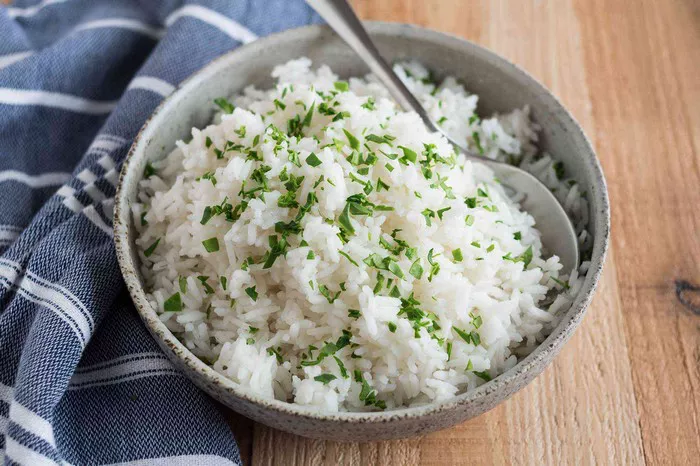When managing diabetes, diet plays a critical role in controlling blood sugar levels and preventing complications. One food that often comes up in discussions about diabetic diets is brown rice. Known for its whole grain status and higher nutritional content compared to white rice, brown rice is frequently touted as a healthier option. But is it suitable for individuals with diabetes? This article delves into the benefits and potential drawbacks of brown rice for diabetics, exploring its impact on blood sugar, overall health, and how it can be incorporated into a balanced diabetic diet.
Understanding Brown Rice and Its Nutritional Profile
Brown rice is a whole grain, meaning it contains all parts of the grain—the bran, germ, and endosperm. This is in contrast to white rice, which has been milled and polished, removing the bran and germ. The process of refining rice to produce white rice strips it of many nutrients, including fiber, vitamins, and minerals. This makes brown rice a more nutrient-dense option.
A cup of cooked brown rice provides approximately:
- 218 calories
- 45 grams of carbohydrates
- 3.5 grams of fiber
- 5 grams of protein
- 1.6 grams of fat
- 20% of the daily value for magnesium
- 15% of the daily value for phosphorus
- 14% of the daily value for niacin (Vitamin B3)
The fiber content in brown rice is significantly higher than in white rice, which is a key factor in its slower digestion and absorption. This slower digestion is particularly important for individuals with diabetes, as it can lead to more stable blood sugar levels.
Glycemic Index and Glycemic Load: Brown Rice vs. White Rice
One of the most crucial factors in determining whether a food is suitable for diabetics is its glycemic index (GI). The glycemic index measures how quickly a carbohydrate-containing food raises blood glucose levels after being consumed. Foods are classified as low, medium, or high GI. Low-GI foods have a score of 55 or less, medium-GI foods have a score of 56-69, and high-GI foods have a score of 70 or more.
Brown rice has a GI of approximately 50, making it a low-GI food. White rice, on the other hand, has a GI of around 89, categorizing it as a high-GI food. This significant difference means that brown rice is less likely to cause rapid spikes in blood sugar compared to white rice.
In addition to the glycemic index, it’s essential to consider the glycemic load (GL), which takes into account the amount of carbohydrate in a serving of food as well as the GI. A food with a low glycemic load will have a minimal impact on blood sugar levels. Brown rice has a glycemic load of about 16 per serving, which is moderate but still lower than white rice.
The Role of Fiber in Diabetes Management
The high fiber content in brown rice is one of its most significant advantages for diabetics. Dietary fiber, especially soluble fiber, can help slow the absorption of sugar into the bloodstream, thereby preventing rapid spikes in blood glucose levels. This is particularly beneficial for individuals with diabetes, who need to maintain stable blood sugar levels to manage their condition effectively.
Fiber also promotes satiety, helping individuals feel fuller for longer, which can aid in weight management—a crucial aspect of diabetes control. Maintaining a healthy weight can improve insulin sensitivity and reduce the risk of developing type 2 diabetes or worsening existing diabetes.
Furthermore, a diet high in fiber is associated with lower cholesterol levels, improved digestive health, and a reduced risk of cardiovascular disease, all of which are important considerations for individuals with diabetes.
Brown Rice and Heart Health
Cardiovascular disease is a common complication of diabetes, and managing heart health is a vital component of diabetes care. Brown rice is rich in magnesium, a mineral that plays a key role in maintaining heart health. Magnesium helps regulate blood pressure, supports proper muscle and nerve function, and is involved in over 300 biochemical reactions in the body.
Additionally, the fiber in brown rice has been shown to lower LDL cholesterol levels, which can reduce the risk of heart disease. The antioxidants found in brown rice, such as phenolic compounds, also contribute to heart health by reducing inflammation and oxidative stress.
Brown Rice vs. Other Whole Grains
While brown rice is a nutritious option, it’s not the only whole grain that can benefit diabetics. Other whole grains, such as quinoa, barley, and farro, also offer high fiber content, low glycemic indexes, and a variety of vitamins and minerals. Diversifying your grain intake can provide a broader range of nutrients and prevent monotony in your diet.
Quinoa, for example, is a complete protein, meaning it contains all nine essential amino acids, making it an excellent choice for vegetarians and vegans with diabetes. Barley is exceptionally high in beta-glucan, a type of soluble fiber that has been shown to improve blood sugar control and lower cholesterol levels.
Portion Control and Brown Rice
While brown rice has many health benefits, portion control is crucial for diabetics. Despite its low glycemic index, consuming large amounts of brown rice can still lead to a significant intake of carbohydrates, which can affect blood sugar levels. The American Diabetes Association recommends that diabetics consume about 45-60 grams of carbohydrates per meal, depending on individual needs and activity levels.
A standard serving of cooked brown rice is about 1/2 cup, which contains approximately 22.5 grams of carbohydrates. Pairing brown rice with non-starchy vegetables, lean protein, and healthy fats can create a balanced meal that supports blood sugar control.
Potential Drawbacks of Brown Rice for Diabetics
While brown rice is generally considered a healthy choice for diabetics, there are some potential drawbacks to consider. One concern is the presence of phytic acid, an anti-nutrient found in the bran of brown rice. Phytic acid can bind to minerals such as calcium, magnesium, and iron, reducing their absorption in the body. However, the impact of phytic acid on mineral absorption is generally minimal for individuals consuming a varied diet rich in these nutrients.
Another concern is the arsenic content in brown rice. Rice plants tend to absorb more arsenic from the soil and water compared to other crops, and brown rice has higher levels of arsenic than white rice because it retains the bran layer where arsenic accumulates. While the levels of arsenic in brown rice are generally low, it’s essential to vary your diet and include other grains to minimize potential exposure.
Incorporating Brown Rice into a Diabetic Diet
To incorporate brown rice into a diabetic diet effectively, consider the following tips:
Balance Your Plate: Pair brown rice with non-starchy vegetables, lean proteins (such as chicken, fish, tofu, or legumes), and healthy fats (such as avocado, nuts, or olive oil). This balance will help slow the digestion of carbohydrates and prevent blood sugar spikes.
Watch Your Portions: Stick to a serving size of 1/2 cup cooked brown rice per meal. This portion provides a moderate amount of carbohydrates that can be managed within a diabetic meal plan.
Mix with Other Grains: Combine brown rice with other whole grains like quinoa, barley, or farro to diversify your nutrient intake and add variety to your meals.
Experiment with Cooking Methods: Try cooking brown rice in different ways to keep meals interesting. Use brown rice as a base for stir-fries, salads, or grain bowls. You can also add flavor by cooking it in low-sodium broth or adding herbs and spices.
Monitor Blood Sugar Levels: After consuming brown rice, monitor your blood sugar levels to see how your body responds. This can help you make informed decisions about portion sizes and meal combinations in the future.
See also: What is the Best Dinner for a Diabetic to Eat?
Conclusion
Brown rice can be a beneficial addition to a diabetic diet due to its high fiber content, low glycemic index, and nutrient density. When consumed in appropriate portions and paired with other healthy foods, brown rice can support blood sugar control, heart health, and overall well-being. However, as with any food, it’s essential to consider individual needs and preferences, monitor blood sugar levels, and maintain a varied diet to achieve the best outcomes for diabetes management. While brown rice is a nutritious option, it should be part of a broader dietary approach that includes a variety of whole grains, vegetables, lean proteins, and healthy fats to support overall health and well-being.
Related topics:
What Meats Should a Diabetic Stay Away From?


























